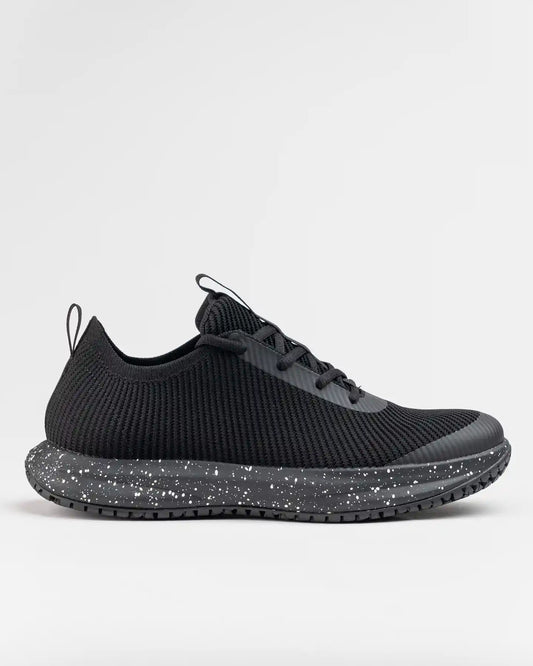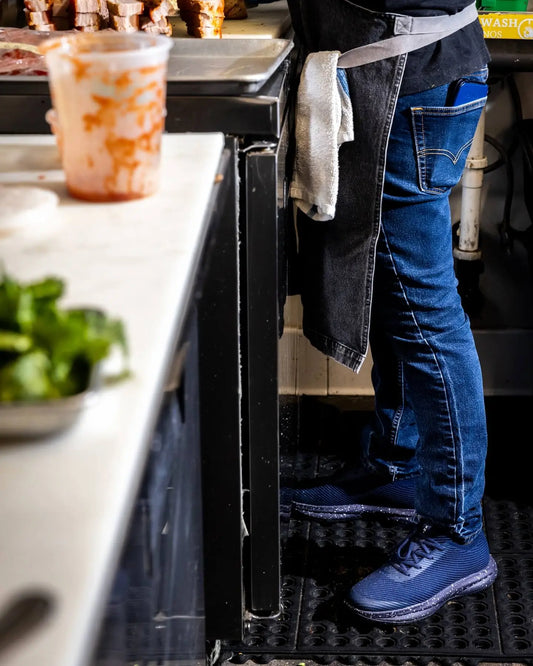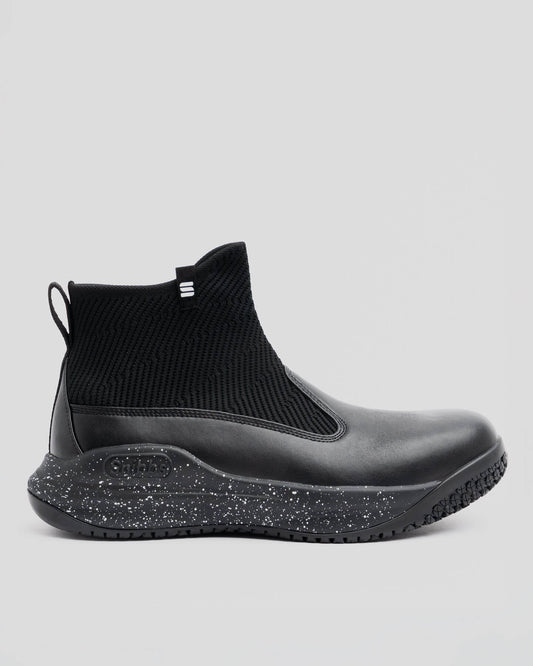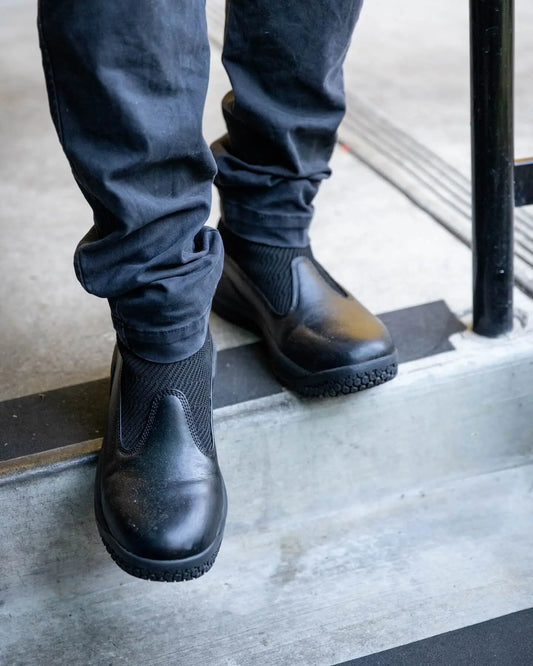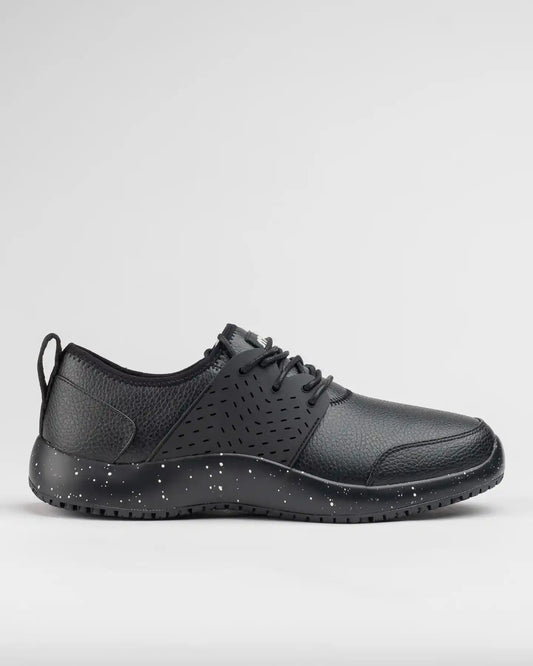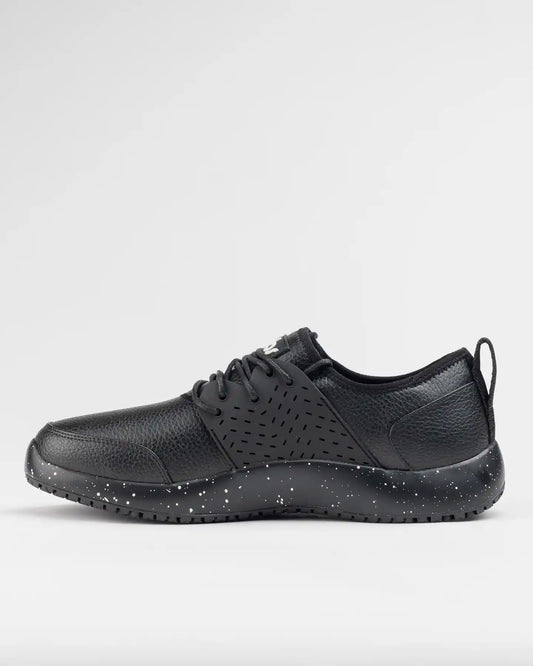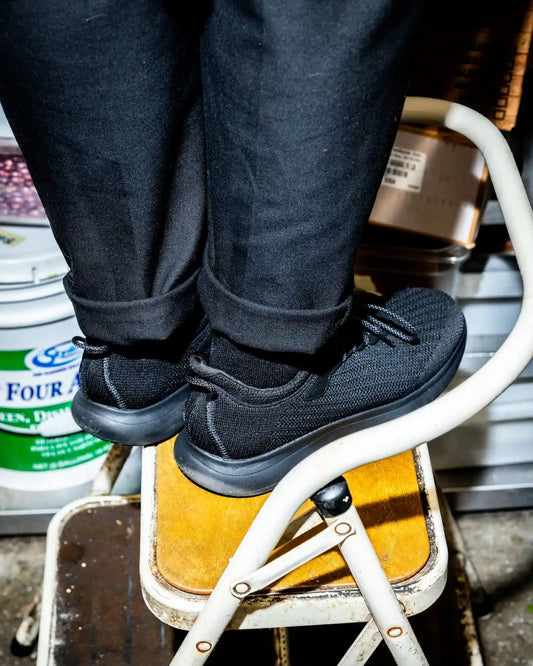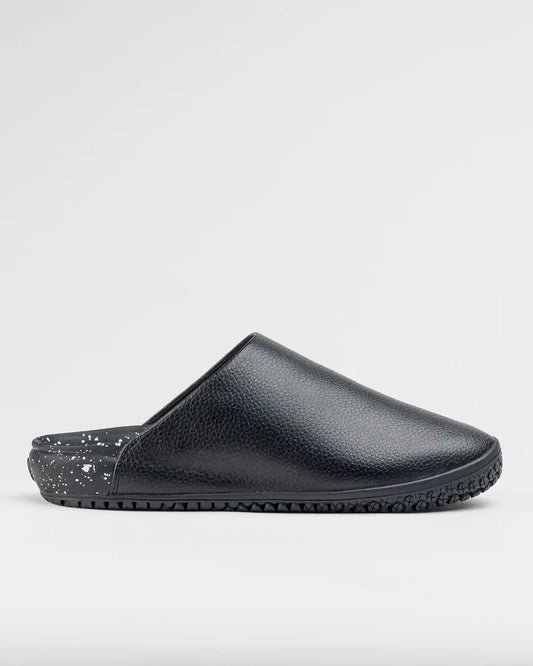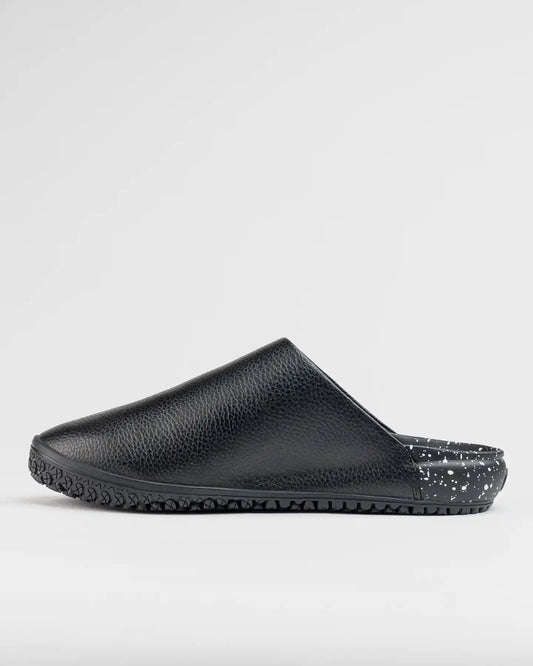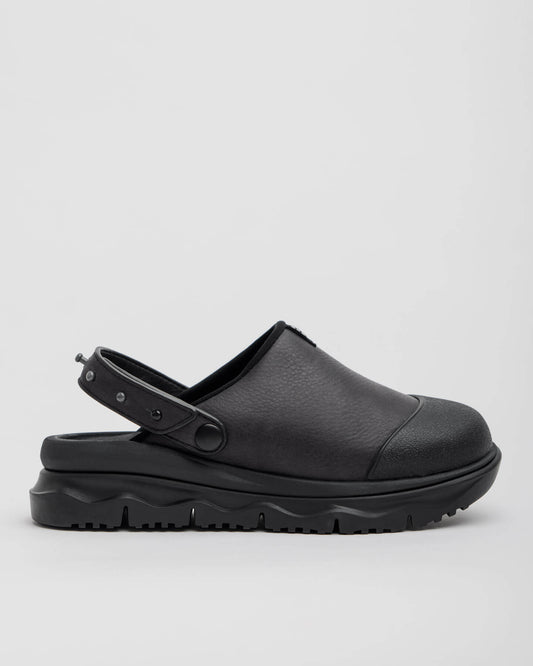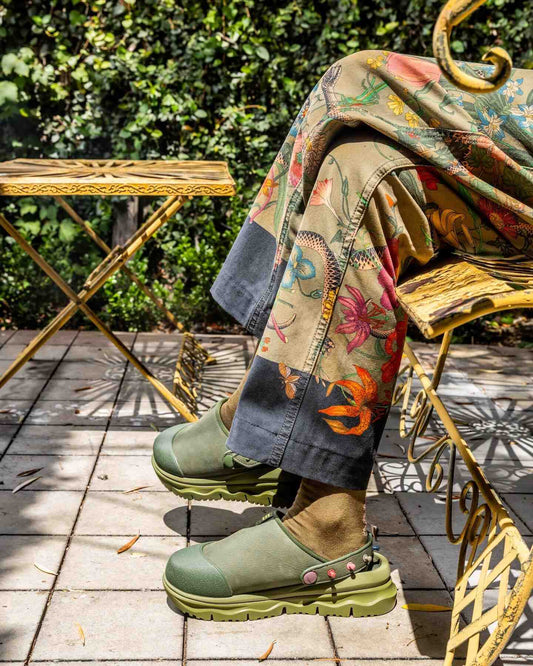9 Most Common Kitchen Accidents
Alex Kinejara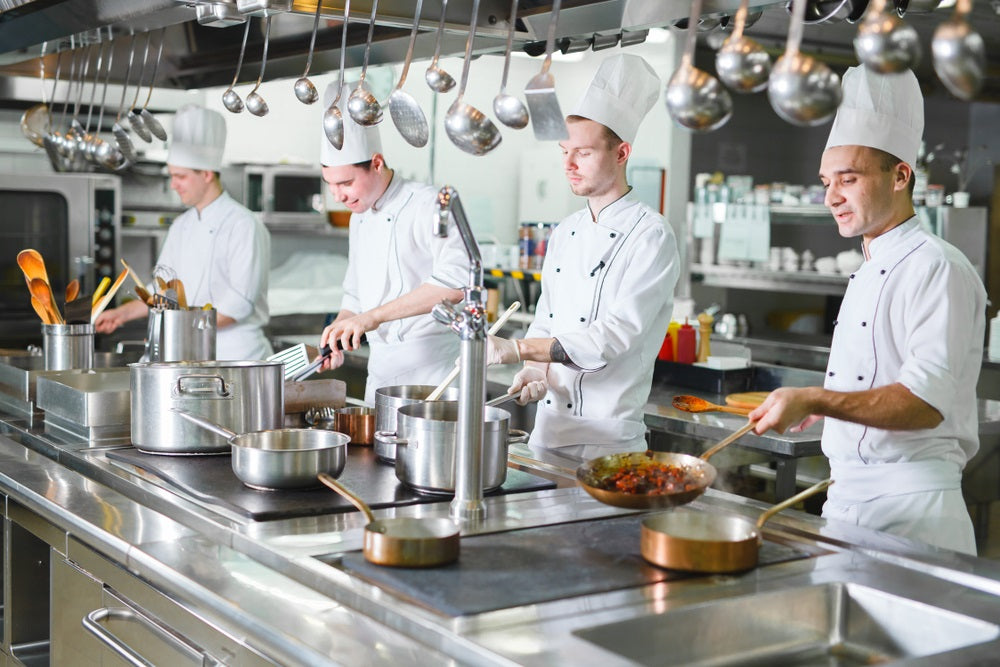
Commercial kitchens might be a foodie haven bursting with tantalizing aromas and flavor-packed dishes, but they’re also home to hot ovens, sharp knives, and grease spills galore. It’s no wonder kitchen accidents are among the most common types of workplace injuries. According to the Bureau of Labor Statistics, cooks have one of the highest rates of injuries of all occupations.1
What can you do to protect yourself and your kitchen staff from being hurt on the job? One proactive step you can take is to learn the most common kitchen accidents so you can head them off before they happen.
Before you slip on your chef coat and cap, let’s go over the nine most common kitchen accidents, along with the best safety tips to prevent them.
#1 Cuts and Lacerations
If you’ve worked in commercial kitchens, you won’t be surprised to learn that the injury rate for restaurant workers often surpasses the injury rate for workers in all other private industry sectors.2 While not all of these injuries are serious, 31% are severe enough to require time off work—and cuts and lacerations could be particularly to blame.3 In fact, food service workers take more time off for lacerations than workers in all other industries.2
But getting too enthusiastic with the chef’s knife isn’t the only cause. Broken dishes, glassware, and bladed equipment like slicers and grinders are also frequently at fault.
To keep yourself safe from workplace gashes, we recommend:
- Keeping knives sharp – Contrary to what you might assume, sharp knives aren’t the biggest culprit behind lacerations. Dull knives are much more likely to result in an accident.4 The excess pressure needed to make a cut results in less controlled movements with greater force behind them, which can easily cause you to lose control of your blade.
#2 Burns
Hot surfaces of all types abound in kitchens, from stovetops and fryolators to oven doors and cooking implements. Throw in hazards from hot liquids like cooking oil and boiling water, and it’s no surprise that burns are among the most common kitchen accidents.
Follow these tips to protect yourself and your staff from burns:
- Turn the saucepan and skillet handle away from the front of the stove.
- Always use oven mitts and pot holders when handling hot dishes.
- Never use a wet oven mitt—the steam created inside when the fabric is heated can seriously scald your skin.
- Always warn coworkers when carrying hot items across the kitchen, especially liquids.
#3 Slips, Trips, and Falls
Slips, trips, and falls are common causes of injuries in all workplaces, accounting for over 27% of all reported injuries.3 Slip-and-falls are especially common in kitchens with a high likelihood of wet and greasy spills, making them one of the most common chef injuries.
To keep you safely on your feet throughout your shift, be sure to:
- Wear proper footgear – The best step you can take to decrease your chance of suffering from a slip in the kitchen is to choose the right work shoes. Athletic shoes may seem comfortable and supportive, but they’re not the best choice for this arena. Water- and slip- resistance are two of the most important factors for safe kitchen shoes,5 and athletic shoes aren’t primarily designed for either of these needs.
#4 Liquid Spills
Closely related to slips, trips, and falls, spilled liquids are one of the top kitchen hazards. But it’s not just a fall risk—spilling boiling or hot liquids like soups and beverages is a common cause of burns.
For safe handling of liquids, remember:
- Dry your hands thoroughly before picking anything up
- Check that your grip is secure before lifting
- Don’t move containers of hot liquids that are overfilled
- Don’t set containers down close to the edge of countertops or on uneven surfaces like dishcloths
#5 Repetitive Motion Injuries
Like most occupations, repetitive motion injuries are one of the top causes of injury—and for kitchen staff, it’s no exception. One study found that repetitive actions like stirring and chopping caused nearly 20% of kitchen injuries.6 Body aches were also a common complaint in the study, reported by 14% of cooks.
A few simple tips to avoid repetitive motion injuries and reduce overall aches and pains include:
- Using equipment like mixers and blenders to avoid repetitive motions like stirring and whipping
- Equipping your kitchen with cushioned floor mats to avoid back and joint pain
- Wearing supportive, shock-absorbing footwear
- Wearing compression socks to protect against leg fatigue and swelling
- Practicing exercise for chefs can help prevent repetitive motion injuries
#6 Broken Plates and Glassware
Every year, tens of thousands of people are injured by cookware.7 This is often caused by cookware shattering while it’s being handled.
Follow these tips to avoid cuts caused by broken crockery:7
- Avoid extreme temperature changes and don’t take dishes straight from the oven to the freezer or vice versa.
- Don’t put plates or glassware directly on burners or into the oven unless it’s an ovenproof dish.
- Don’t set hot dishes onto damp or chilled surfaces such as refrigerator shelves.
- Don’t put cold liquids into hot glassware.
- Inspect cookware for cracks frequently, and stop using them when they’re cracked.
#7 Handling Hot Peppers
This is a hazard that can sometimes slip in under the radar. Although it might not cause long-term harm, it can be a decidedly unpleasant experience. Remember, the capsaicin oil that gives peppers their heat is the active ingredient in pepper spray. In other words, when it comes into contact with sensitive skin, it’s no joke.8
Contact lens wearers must be especially cautious, as removing lenses with capsaicin oil on your hands could cause extreme pain even hours after handling peppers. Always wear disposable gloves when handling chilies.
Here’s another safety tip you’ll want to keep in mind when handling anything from jalapeños to habañeros:
- Don’t use water to remove pepper oil from your skin – Hot water can spread the capsaicin oil further and even cause inhalation. Instead, apply a paste of water and baking soda to your hands. Let the mixture dry, then rinse it off. Voila—no more pepper hands.8
#8 Blender Injury
According to Consumer Reports, more than 7,000 people were injured by blenders in just one year. Plus, with the popularity of handheld immersion blenders, blender injuries are on the rise.9
For that reason, we recommend never putting your hand in a blender for any reason. That’s because blenders don’t usually have a safety lock to prevent the machine from turning on when your fingers or hands are in the way of the blades, so never take the risk of putting your hand inside.
Beyond that, we recommend blending water and soap together instead of washing them by hand. Just add hot water and dish soap to the jar, run it on high for a few seconds to a minute, then rinse.
#9 Fire
The National Fire Protection Association reports that fire departments in the United States respond to an average of over 7,400 fires in commercial kitchens every year.10 The first thing that springs to mind when you think about fire hazards in the kitchen is probably the gas stove or oven, but it’s not the only risk factor. Electrical fires related to overheated electrical equipment, worn plugs, frayed cords, and overloaded outlets are also common.
Other often overlooked kitchen fire hazards include:
- Fryers
- Dish towels and pot holders
- Oily rags
- Grease traps
- Flour (clouds of flour near open flame are especially flammable)
As one of the most serious risks in the kitchen, fire safety training for your staff should be a priority. In addition, always keep these fire safety tips in mind:
Choose Kitchen Safety With Snibbs
Workplace injuries are almost unavoidable in a hazardous environment like a commercial kitchen, but keeping yourself and your staff safe is vital to avoid unnecessary pain, stress, and costs. Preventative measures like staff training on proper use, storage, and maintenance of equipment take a little time and forethought to implement, but they’re well worth the investment over the long term.
Another one of the most effective preventative measures you can take for yourself is as easy as wearing proper work shoes, like slip-resistant, water-resistant, and ergonomically designed shoes from Snibbs. They offer extra support and stability designed to keep you comfortable on your feet all day. They’re also certified slip-resistant and water-resistant—without sacrificing breathability.
Shop Snibbs today, and you’ll be one step closer to making your kitchen a safer place.
Sources:
- Bureau of Labor Statistics. Occupational outlook handbook: cooks. https://www.bls.gov/ooh/food-preparation-and-serving/cooks.htm#tab-3
- Bureau of Labor Statistics. 93,800 nonfatal injuries and illnesses in full-service restaurants in 2019. https://www.bls.gov/opub/ted/2020/93800-nonfatal-injuries-and-illnesses-in-full-service-restaurants-in-2019.htm
- Restaurant Technologies. Commercial kitchen safety 101. https://www.rti-inc.com/resources/restaurant-kitchen-safety-101
- University of Rochester Medical Center. Be careful with kitchen knives. https://www.urmc.rochester.edu/encyclopedia/content.aspx?contenttypeid=1&contentid=263
- Chron Small Business. Kitchen hazards and kitchen safety. https://smallbusiness.chron.com/kitchen-hazards-kitchen-safety-40195.html
- International Journal of Science and Research. Occupational hazards among cooks in commercial kitchens. https://www.ijsr.net/archive/v5i6/NOV164321.pdf
- Consumer Reports. 7 scariest kitchen accidents. https://www.consumerreports.org/cro/news/2014/10/7-scariest-kitchen-accidents/index.htm
- Escoffier School of Culinary Arts. How to handle hot peppers safely. https://www.escoffieronline.com/how-to-handle-hot-peppers-safely/
- Consumer Reports. Blender injuries stir up more visits to the emergency room. https://www.consumerreports.org/cro/news/2013/02/blender-injuries-stir-up-more-visits-to-the-emergency-room/index.htm
- National Fire Protection Association. Structure fires in eating and drinking establishments. https://www.nfpa.org/News-and-Research/Data-research-and-tools/Building-and-Life-Safety/Eating-and-drinking-establishments
- Tufts University Department of Public Safety. Cooking safety. https://publicsafety.tufts.edu/firesafety/cooking-safety/
